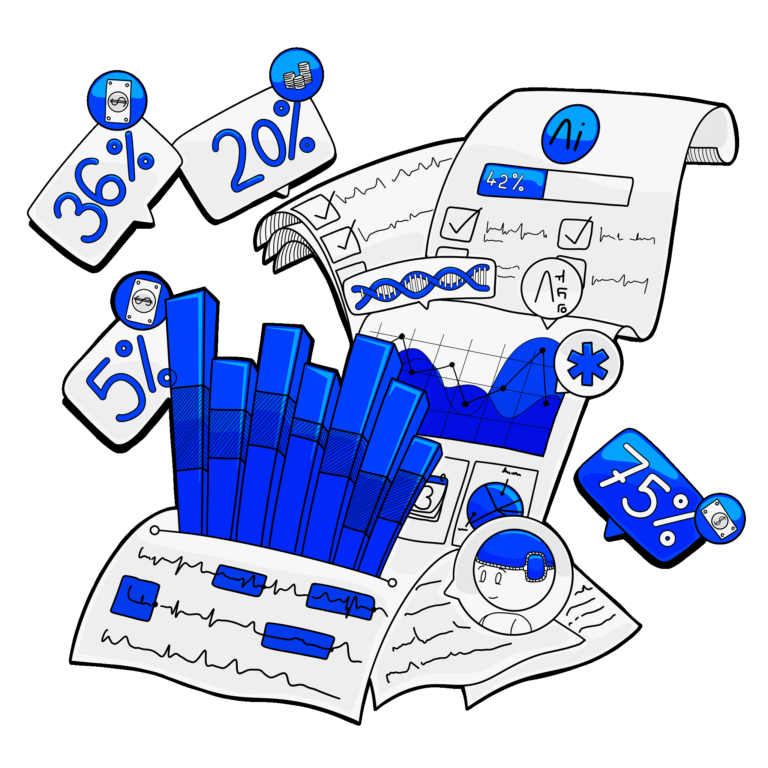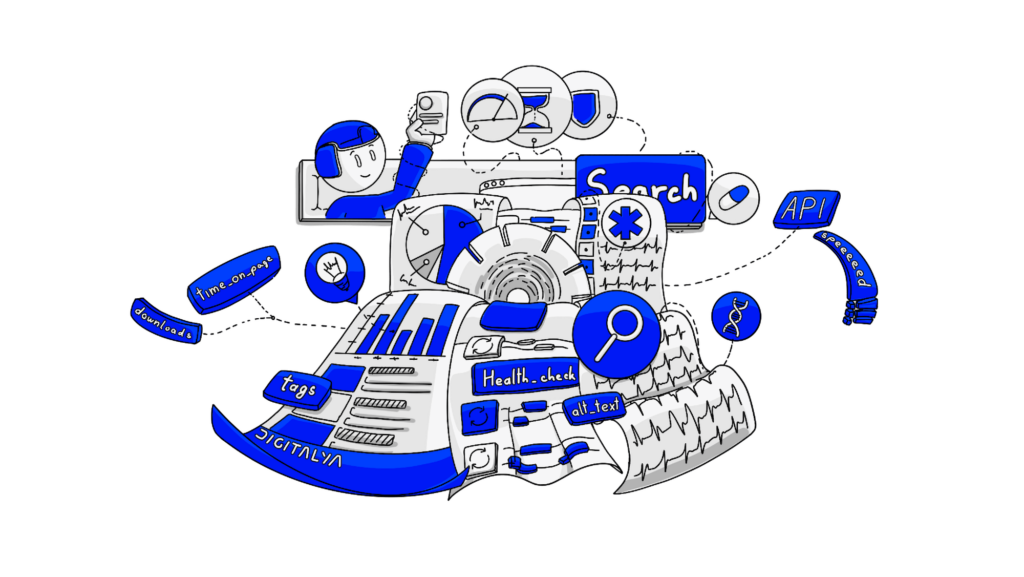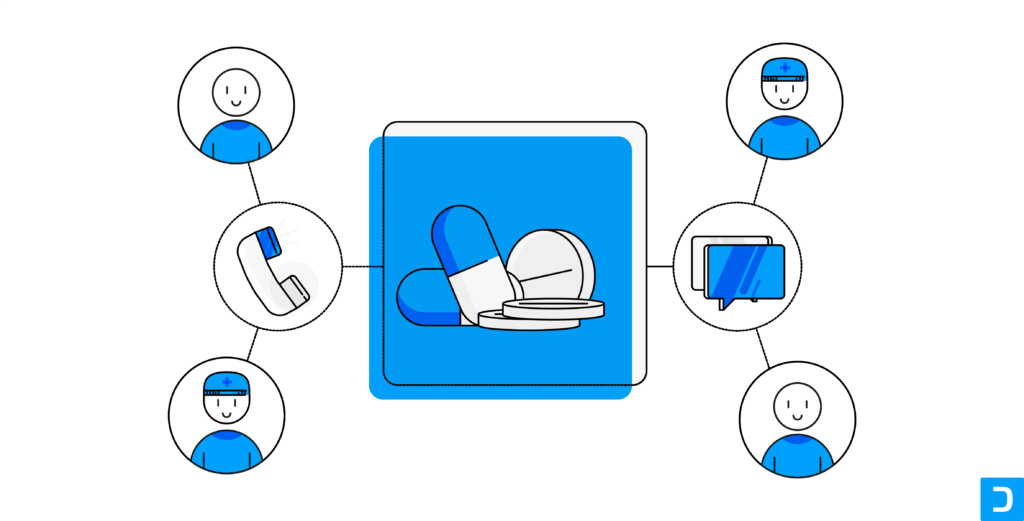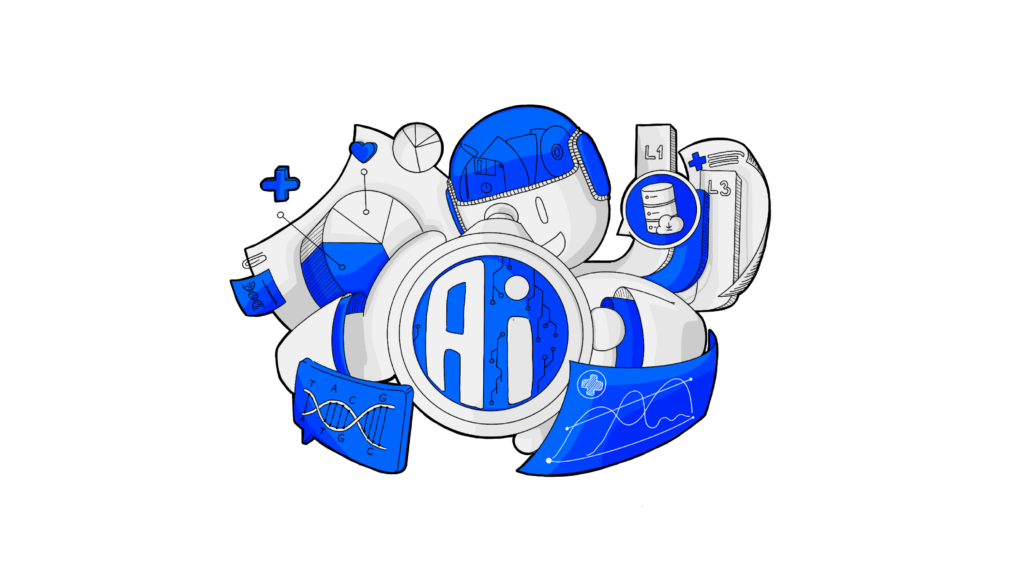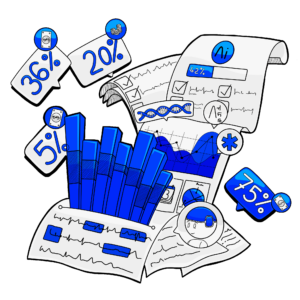The internet is becoming more and more crowded. It’s a space with a lot of noise and a lot of opportunities to change lives, solve problems and make money. You can do this by buying stocks, crypto, backing start-ups, or getting on stage and developing your ideas into future-shaping apps.
All of the above-stated options have one thing in common – investment. We can find different solutions to start investing with as few as 10 dollars directly from our phones, but what is the investment required to become a direct participant in bringing value? What are the mobile app development costs in 2025? How much does it cost to build an app?
As Trotsky, Comte and Stieglitz managed to agree, “Everything is relative.” Their thoughts apply to the investment required to develop a mobile application too.
It doesn’t sound too encouraging at this point, but it gets better, and there is undoubtedly a way to estimate this effort to develop custom software.
The short answer is that building a mobile app costs between 25 000 and 250 000 USD.
Further, we will find out why this range is so wind and how we can narrow it down.
1. Mobile app development cost breakdown
The first question you will answer during a discussion about your mobile app is what do you want it to do and to whom it addresses.
Depending on this, you will be able to understand the magnitude of app development effort, which will translate into currency afterward.
A simple app with basic user features and some administrative interface would cost at least 25 000 USD, according to Goodfirms. Adding complexity layers and a higher hourly rate can bring your cost to develop the app to 60 000 USD.
If you want to bring a more complex application onto the market with additional features like camera integration, geolocation, sync across multiple devices, and payment integration, the total cost can go between 40 000 and 131 000 USD.
At the same time, a custom mobile application with personalized features with a high-end development agency can reach above 250 000 USD.
| App complexity | Minimum amount | Maximum estimated |
|---|---|---|
| Basic user and admin app | 25 000 USD | 60 000 USD |
| All of the above + complex features | 40 000 USD | 131 000 USD |
| Advanced App | 250 000 USD | 500 000 USD |
Still, there is a significant difference between the minimum and maximum amounts. A considerable variation comes from the number and type of features that fit into the “complex” category. And another important factor is the location of the development partner. The same application will bear higher investment costs in the US than in the EU, mainly due to differences in the app developer wages.
| Continent | Average hourly rate (USD) |
|---|---|
| Australia | 148 |
| North America | 147 |
| Western Europe | 140 |
| Eastern Europe | 86 |
| South America | 82 |
| Africa | 53 |
| Asia | 47 |
Those are the average daily rates extracted and estimated from clutch.co.
Having the above table in mind is a good starting point, but it is far from enough for a minimum viable product estimate. You need to know the app cost range for every feature and how much you can start with, mainly because you might get additional funding during the app development process.
For this, the below table, based on Goodfirms survey, might become handier.
| Complexity | Improving features | Time to develop (hrs) | Cost to develop (min-max, USD) |
|---|---|---|---|
| Simple user features | Login (Email/Social Media) User Profile (Make & Edit) Chat/Messaging File uploading Dashboard Search Native Device Features | 80 – 160 | 4000 – 24 000 |
| Complex user features | User Engagement (Social Media, Email, SMS, etc.) Activity feed Camera/Gallery E-commerce – Catalogs, Ordering, Shopping Carts, etc Geo-Location One-click contacting Payment Integration QR/Barcode Scanner Integration Stream Audio/Video Sync across all devices User Privacy Setting | 100 – 240 | 5 000 – 36 000 |
| Advanced user features | Augmented Reality Customization Multi-language support | 160 – 400 | 8 000 – 60 000 |
Based on the above table, you can pick app features, the average hourly rate based on a location that you prefer, and deduct the approximate high-level amount that you’ll require to make it real.
2. Android app development cost vs. iOS vs. React Native
Another variable worth mentioning and that has a significant impact on your budget is the mobile platform on which your application will run. Being aware of this aspect can significantly increase your app budget optimization., mainly when a single platform better covers your target audience.
The general case is that app owners will simultaneously roll their application on Google Play and Apple’s app store. So even though we are talking about a single application, the decision to develop an Android app and an iOS one means to increase the development cost by a third. The cost increase comes from the fact that there is a single back-end while developing an app’s front-end is a double effort.
Though the application looks the same, the native environment differences and different programming languages require other skills and additional time for development.
Choosing the native apps path should not be scratched off the list, though. If you are promoting a new “thing” that is not mainstream yet, and your target audience is focused on one of the iOS or Android platforms, choosing one platform (based on market research) might be a way to build up energy and support behind your application. Another reason for building your app for a single platform is developing an enterprise mobile application where you know for sure the preferred OS of its users.
Another option that will optimize your budget has a hybrid mobile app. If your partner has React Native or other hybrid languages in their tech stack. You will have a single application that will respond to both iOS and Android phones almost naturally but will be developed only once.
| Region | IOS developer USD/h | Android dev USD/h | Cross-platform dev USD/h |
|---|---|---|---|
| Canada | 90 – 130 | 100 – 130 | 90 – 130 |
| USA | 110 – 150 | 100 – 150 | 100-150 |
| South America | 40 – 50 | 35 – 50 | 35 – 50 |
| UK | 60 – 75 | 60 – 75 | 55 – 75 |
| Europe | 35 – 55 | 35 – 55 | 30 – 50 |
| Ukraine | 30 – 55 | 30 – 55 | 30 – 55 |
| South Africa | 45 – 80 | 40 – 80 | 40 – 80 |
| India | 20 – 30 | 15 – 25 | 20 – 30 |
| South-East Asia | 35 – 45 | 30 – 40 | 30 – 40 |
| Asia | 25 – 35 | 20 – 30 | 25 – 35 |
| Australia | 90 – 120 | 100 – 120 | 90 – 120 |
3. Costs by app development stage
Until now, we’ve seen a lot of numbers, hourly rates, daily rates, and tables. All of them say you need money to bring your app into people’s phones. But will you need all of this money at once? Is there a way to control and plan the cash flow?
There comes the good news! As the app development process has different stages, you can take advantage and plan your cash flow based on this process. You can also take breaks between those stages to regroup, increase your team or even sell what was already done using platforms like flippa.
Coming back to those stages, what they are, when they are, and what’s their impact on your budget?
The first performed action after you have your magic idea is to plan. The mobile app planning stage is where you will set your goals, develop monetization strategies, think about your audience, research development partners, and many more. Since the easiest way to correct a mistake is to avoid it, the recommendation is to seek the most quality at this stage. The total cost of the planning stage is at most 5% of the total cost, but it will be capitalized further for sure.
At Digitalya, we can help you clear these questions through a design sprint workshop, after which you will have a clear image of what needs to be done.
The second stage that you will consider in your budget planning is UX/UI Design. It is another stage with a high impact on your project and its users. It can be split into UI and UX design and done separately, but the best recommendation is to have the one entity responsible for developing an app’s design and code. This is the only way you can be sure that there will be no information lost in the transfer, and considering that design stage cost is up to 6% of the total cost, you better choose quality.
You will find that there are several more next stages – Development, testing, and infrastructure, before the last one. Since we are talking about budgets and the way you plan your investment batches, the best thing is to look at these stages as a whole. It is the period when your mobile app will be developed. Testing and infrastructure are also parts of this stage, and the only reason you’d want to look at them separately is if you have special skills or expertise in one of these domains and you’d like to be directly involved. Going even further, if you have business analysis experience, you could act as an involved product owner and reduce the cost of app development.
Taken as a whole, for development, testing, and infrastructure, you’ll need about 80% of your total investment. Separately, app testing costs get up to 10%, while the infrastructure can get to 20% of your entire investment.
There are minor costs associated with app deployment, but you need to consider that both Google’s Play store and Apple’s app store have fees (25USD first and 99 USD the second).
4. Mobile app development timeframes
But will you need to cover all those costs in advance? Or can they be split into stages?
There is no clear answer, but common practice is to agree on how this will work with the development partner.
You can choose a fixed-price contract that means setting clear milestones and outsourcing all the risks to the developer. It involves a more straightforward path but allows less space for flexibility. You will know the dates when a feature will be available and the date by which you will have to pay the development bill.
Another option is to use the time-and-materials option. This allows you to control the development, be flexible and cover the unexpected (which always will appear). In this case, the payment schedules are every month or sprints, depending on how your partner works.
For a simple mobile application, the development timeline gets up to a month. However, depending on the complexity, an advanced application development process can take up to a year and a half.
5. How is mobile app development cost estimated?
There are a lot of figures, percentages, and comparisons thrown around by now. So it’s normal to think about how we get the values and if you can trust them.
Mobile application development costs are estimated using the precedent principle. Even from the education period, a software developer will work on different projects with different technologies. As a result, their skill and experience will grow in time. This way, we’ll know that a simple integration with geolocation will take between three and five days to implement. This is an example of a rough estimate made by development teams.
At Digitalya, we offer mobile application development services. And when we have to provide an estimate, we need to know the details to assume some things. So the best-case scenario is to have detailed wireframes with descriptions since it gives us more precise requirements. But it is not a must-have – in case you don’t have all the details, we can work with similar application examples (I want to develop an app like Uber but with some tweaks) or requirements and behavior summary.
Depending on the amount of offered information, you will receive a rough estimated quote which you can use to compare to other offers or to prepare your high-level budget.
After you have decided which development agency you will choose for your application, you will ask for a detailed estimation.
The developers will need to dive deep into all available documentation and analyze the wireframes and every described feature separately to prepare this estimate. And you will receive a final quote with development times, costs, and risk percentage. Finally, the last one gives you an image of the possible variations due to unexpected changes in your mobile app’s dependencies.

6. App Maintenance Cost
At this point, your app is developed, deployed, and paid in full. You believe that everything is working well, and you even may fantasize about your next project. Then reality hits. There’s unusual traffic in the app, new OS versions make it act weird, or the users do unexpected things.
It always happens. Users keep evolving, and applications need to keep updating.
To be prepared for these situations, you should think about a maintenance agreement. You can look at it as storm insurance in Miami. So, to cover the maintenance cost, an extra 5-10% of your development budget will be enough.
7. App development cost calculator
The development community has invented the app development cost calculator to make things simple and comfortable for the users. Based on this app development cost calculator, you can get a rough estimate of your project in 5 minutes.
As you already know, a rough estimate won’t give you the precise image of your required investment, but you should use it for price range comparison.
We recommend checking as many calculators as possible since answering those questions might help you better understand your mobile application’s usability, and you’ll be able to balance your budget.
8. Conclusion
Regardless of the fact if you skipped your way directly to this paragraph or you read through every word in the above text, there are nine things that you need to know about mobile app development costs:
- The range starts at 25,000 USD and, in exceptional cases, can get over 250,000. The most crucial factor that affects mobile app cost is the location of your development partners.
- Building a crossplatform app could save you lots of money and effort. You can plan your app budget based on development stages: 5% for planning, 6% for design, 80% for development, and up to 9% for maintenance.
- You don’t have to pay this money at once. Most developer companies have feature-based contracts and billing or time-and-materials contracts that have monthly/sprint-based billing.
- You can use app cost calculators to get a fast rough estimate for your project.
- And once you have reduced the pool of possible partners, you can ask for a detailed estimate.
- Budget 5-10% of the development budget to cover app maintenance cost. You should remember to set aside a budget for app marketing.

